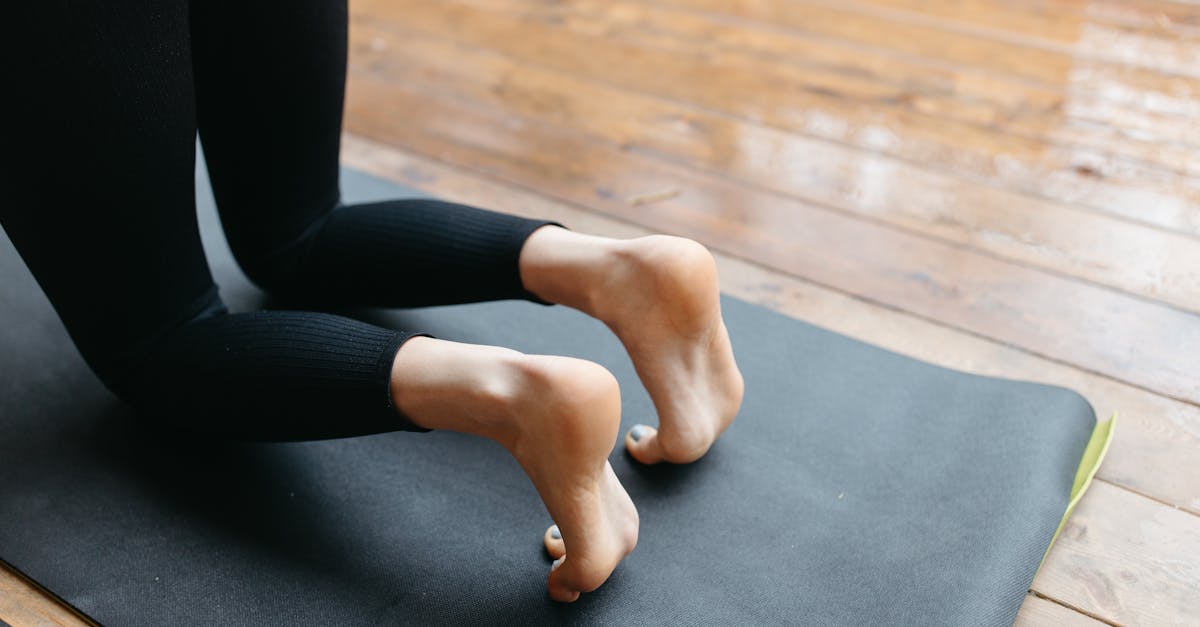|
In Short, regulating neuromuscular tension is a vital process that ensures optimal body function by improving the communication between muscles and nerves. This balanced state enhances posture, reduces pain, and boosts overall physical performance, making daily activities more enjoyable. By identifying and addressing muscle imbalances, individuals can achieve a greater sense of stability and well-being. The techniques employed focus on facilitating the body’s natural ability to recalibrate itself, fostering long-term health benefits. |
Achieving balance in the human body is paramount for optimal function, especially when it comes to regulating neuromuscular tension. This involves understanding the relationship between muscle coordination and posture, with a focus on identifying and correcting muscle imbalances that often stem from physical, emotional, or mechanical stresses. By incorporating targeted stretching and strengthening techniques, individuals can enhance their body awareness, improve overall stability, and foster long-term health benefits. Strategies may include practicing mindfulness, utilizing ergonomic tools, and engaging in exercises that mentally and physically align the body, ultimately leading to a pain-free and dynamic lifestyle.

Welcome to Pulse Align: Your Journey Towards Balanced Well-being
At Pulse Align, we offer a gentle, innovative, non-invasive method designed to help restore your body’s natural balance and posture through the use of subtle, imperceptible pulses. This unique approach aids in the recalibration of muscle tone, which naturally supports overall wellness and may lead to reduced tension and discomfort in everyday life.
Embrace a Natural Recalibration Process
Our approach centers on the premise that the body has an inherent ability to recalibrate itself. Rather than focusing solely on discomfort or specific conditions, Pulse Align promotes muscle tone symmetry and improved posture, which often results in enhanced comfort and overall wellness. Many clients find that as they engage with this gentle service, they experience a noticeable shift towards greater physical alignment.
Personalized Experiences that Make a Difference
At Pulse Align, we value every individual’s journey. Our clients have shared inspiring testimonials, witnessing significant improvements in their body’s equilibrium, neck and back tension, and overall well-being. Parents often appreciate how our services are also suitable for the entire family, including children and pregnant women, making it an inviting option for all.
Discover Pulse Align Near You!
We invite you to explore our wide array of services and see how Pulse Align can contribute to your wellness journey. To find a location near you—whether in La Prairie, Mont-Royal, or Terrebonne—be sure to visit our website. Here, you can learn more about what we offer and easily book a consultation for yourself or your family. Remember, Pulse Align is here to complement your overall wellness journey, working alongside your existing healthcare support.
Embark on your path to enhanced wellness with Pulse Align. Schedule your appointment today!
Medical Disclaimer
The information provided on this site is for educational purposes only and is not a substitute for professional healthcare advice. Clients are encouraged to consult with their healthcare team for ongoing wellness management.
Achieving Balance: Key Strategies for Regulating Neuromuscular Tension
- Mindfulness Practices: Engage in yoga and meditation to enhance body awareness and reduce tension.
- Dynamic Stretching: Incorporate routine stretching to improve flexibility and alleviate tightness.
- Strength Training: Focus on balanced resistance exercises targeting weak muscle groups.
- Regular Posture Checks: Evaluate and adjust seating and standing positions throughout the day.
- Ergonomic Equipment: Utilize furniture and tools designed to maintain proper alignment.
- Breath Regulation: Practice deep diaphragmatic breathing to support posture and reduce stress.
- Physical Therapy: Consult with professionals for customized plans addressing muscle imbalances.
- Hydration and Nutrition: Maintain proper hydration and a balanced diet for optimal muscle function.

Understanding the importance of neuromuscular tension regulation is essential for maintaining optimal body function. Good posture and functional movement rely on the balance between muscle groups, enabling smooth coordination. This article explores practical strategies to address neuromuscular imbalances, improve overall wellness, and achieve a more resilient and functional body.
Recognizing Neuromuscular Imbalances
Identifying the signs of neuromuscular imbalances is vital in order to implement effective corrections. Symptoms such as persistent muscle tension, chronic pain, and reduced mobility often indicate underlying muscle weaknesses or overactivity. Regular self-assessments and awareness of body mechanics can help you recognize these signs early, allowing for timely intervention and reducing the risk of long-term complications.
Common Causes
Several factors contribute to the development of neuromuscular imbalances. Stress, poor posture, and mechanical misalignments can lead to altered neuromuscular tension. Sedentary lifestyles further exacerbate these imbalances by weakening underused muscles and causing tightness in overactive muscle groups. Acknowledging these causes empowers individuals to make lifestyle changes that promote a greater sense of balance.
Implementing Corrective Practices
To effectively regulate neuromuscular tension, it’s crucial to incorporate a variety of corrective practices into your daily routine. Start by focusing on postural awareness. Being mindful of your alignment during daily activities can greatly enhance stability and prevent the exacerbation of muscle imbalances. Simple adjustments, such as ensuring a neutral spine and allowing shoulders to relax, can significantly improve posture and function.
Dynamic Stabilization Exercises
Incorporating dynamic stabilization exercises into your routine can provide excellent support for neuromuscular regulation. These exercises reinforce proper movement patterns while enhancing muscle strength in a balanced manner. Activities that engage multiple muscle groups, such as balance training or functional movements that require stabilization, can promote greater neuromuscular coordination and a stronger foundation for movement.
The Role of Stretching and Strengthening
Engaging in both stretching and strengthening techniques is essential for maintaining neuromuscular balance. Stretching tight muscle groups increases flexibility and reduces tension, while targeted strengthening of underactive muscles restores equilibrium. Making these practices a regular part of your routine creates a resilient neuromuscular system, enabling you to navigate daily activities with greater ease.
Mindfulness and the Body-Mind Connection
The mind-body connection plays a significant role in regulating neuromuscular tension. Practicing mindfulness techniques such as meditation, breath regulation, and yoga enhances awareness of body sensations and helps to reduce stress. Engaging in these practices fosters relaxation and allows individuals to identify and address muscle imbalances effectively.
Integrating Holistic Approaches
Taking a holistic approach emphasizes the importance of considering both physical and mental aspects of health. Exploring non-invasive techniques such as the ones utilized by Pulse Align can complement traditional healthcare. This focus on overall wellness promotes natural recalibration and encourages the body’s intrinsic ability to heal and restore balance.
Creating a Sustainable Routine
Establishing a consistent routine that incorporates the principles outlined in this article is crucial for long-term success. Assess your daily activities, incorporate corrective practices, engage in strengthening and stretching, and maintain your mindfulness exercises regularly. By prioritizing neuromuscular health through these accessible methods, you empower yourself to achieve lasting balance and improved health.
| Comparison Axis | Insights for Wellness and Balance |
| Understanding Muscle Imbalances | Recognizing the origins of tension fosters greater awareness and encourages proactive movement adjustments. |
| Importance of Muscle Coordination | Improving coordination through targeted practices enhances overall stability and promotes balance. |
| Posture Awareness | Heightened awareness of posture cultivates healthier habits leading to natural body alignment. |
| Holistic Movement Practices | Incorporating functional movements nurtures harmony in muscle engagement and body dynamics. |
| Impact of Stress | Identifying physical and emotional stressors enables relaxation techniques that reduce tension. |
| Strengthening Techniques | Balanced strength training supports joint stability and mitigates muscle tension. |
| Breath Control | Mindful breathing practices promote relaxation and enhance overall body awareness. |
| Diversity in Movement | Engaging in varied physical activities strengthens adaptability and resilience across the body. |
| Mind-Body Connection | Enhancing the connection between mind and body empowers individuals to address imbalances effectively. |
| Consistency in Practice | Regularly engaging in mindful movements supports ongoing balance and overall wellness. |

Client Testimonials: Embracing Wellness Through Natural Balance
Clients across various regions have shared their transformative experiences with Pulse Align, emphasizing how the unique approach to regulating neuromuscular tension has supported their body’s natural ability to recalibrate and restore balance. In La Prairie, the service has been highly appreciated by those seeking relief from chronic discomfort, with one client stating, “After just a few sessions at Pulse Align, I felt a significant reduction in my neck tension, allowing me to enjoy daily activities without pain.” This sentiment reflects the overarching theme of holistic recovery experienced by numerous individuals.
In Mont-Royal, clients have reported remarkable improvements in their overall well-being and posture. A local resident shared, “The gentle pulses used in the sessions felt incredibly intuitive. I noticed my posture improving naturally, and I no longer experience the discomfort I used to feel after long hours of work.” Such testimonials highlight the effectiveness of Pulse Align’s methods in facilitating sustainable wellness.
Additionally, clients from Terrebonne have expressed satisfaction with how the approach has rejuvenated their bodies. One testimonials read, “I never realized how unbalanced my body felt until I engaged with Pulse Align. The gentle recalibration techniques have made a noticeable difference in my daily energy levels and overall function, making my life more enjoyable.” This illustrates the progressive impact of the services offered, helping clients reclaim their vitality.
In the picturesque region of Les Escoumins, clients have also benefited from the personalized experience at Pulse Align. A participant conveyed, “The focus on restoring balance rather than just relieving pain has been revolutionary for me. I leave each session feeling more in tune with my body and its needs.” This holistic perspective is a common theme echoed by many who find value in these services across different cities.
With a commitment to working alongside healthcare teams, Pulse Align is dedicated to supporting clients and their families throughout their wellness journey. Whether in Châteauguay, Saint-Jérôme, or even far-off Panama City, the promise of enhanced body function is being realized by many. Explore the range of benefits for yourself at Our Clinics and discover how Pulse Align can help you achieve a more balanced and healthy life.
Dr. Sylvain Desforges is a distinguished expert in osteopathy, naturopathy, and manual medicine, renowned for his pivotal role as the founding president of TAGMED clinics and the ACMA association. With an unwavering commitment to healthcare innovation, Dr. Desforges has thrived in creating solutions that not only address immediate patient concerns but also lead to long-term health benefits. His multifaceted approach merges traditional techniques with modern advancements, ensuring a well-rounded strategy for managing health.
Throughout his career, Dr. Desforges has placed a strong emphasis on the effective management of chronic pain. He recognizes that chronic pain is a complex ailment often stemming from various neuromuscular imbalances and lifestyle factors. As a result, his practice is dedicated to identifying the root causes of each patient’s discomfort, thereby facilitating a more accurate diagnosis and treatment plan. By emphasizing the importance of understanding the underlying issues associated with chronic pain, he empowers patients to take an active role in their health journey.
Dr. Desforges utilizes advanced technologies to enhance the effectiveness of his treatments. Among the key modalities he employs are spinal decompression, laser therapy, and shockwave therapy. Each of these techniques plays a vital role in alleviating discomfort and restoring functional movement. For instance, spinal decompression helps alleviate pressure on the discs and nerve roots, thereby enabling greater fluid circulation and accelerated healing. Similarly, laser therapy promotes tissue regeneration, reduces inflammation, and enhances overall recovery time. Shockwave therapy, on the other hand, stimulates cellular repair and boosts circulation, leading to improved muscle function and pain relief.
Dr. Desforges’s mission extends beyond just treating symptoms; it encompasses a holistic approach to optimizing his patients’ overall health and well-being. He prioritizes evidence-based practices, allowing him to provide care that is backed by research and clinical outcomes. By continually staying informed about the latest developments in healthcare, Dr. Desforges ensures that his patients have access to the most effective and innovative treatment options available.
Patients seeking care at TAGMED clinics can expect a personalized experience. Dr. Desforges and his team take the time to understand each individual’s unique health concerns, crafting tailored treatment plans that resonate with their specific needs and goals. This level of personalization not only fosters trust and rapport but also allows patients to feel actively engaged in their healing process. The atmosphere in the clinics is both welcoming and supportive, reflecting Dr. Desforges’s belief that healthcare should be a collaborative journey.
The impact of Dr. Desforges’s work can be felt across the communities of Montréal, Terrebonne, and Mont-Royal, where his clinics have become a beacon of hope for those struggling with chronic pain and neuromuscular issues. As a thought leader in the field, he frequently participates in public discussions to raise awareness about the importance of maintaining optimal body function through proper neuromuscular tension regulation. His dedication not only enhances individual health outcomes but also contributes to a broader understanding of holistic healthcare practices.
To learn more about Dr. Desforges’s approach and available services, individuals can explore the offerings at TAGMED clinics through their website. Here, they’ll find a wealth of information on how to achieve balance and regain optimal function in their bodies through advanced, compassionate care.
Neurovertebral Decompression Technology by TAGMED
Mechanism of Action
The neurovertebral decompression technology developed by TAGMED works by applying controlled and gradual traction force on the spinal column. This targeted approach increases the distance between the vertebrae, thereby reducing pressure on the intervertebral discs and nerve roots. This decompression effect facilitates improved fluid circulation in the affected area, essential for nourishing spinal structures. By relieving pressure from surrounding tissues, this process significantly diminishes inflammation and alleviates pain, making a substantial impact on patients suffering from chronic conditions such as disc herniation, disc bulging, and moderate to severe spinal or foraminal stenosis.
Specific Advantages
This non-invasive method effectively relieves chronic pain and associated symptoms related to the conditions mentioned. By optimizing fluid circulation around the discs and reducing the pressure exerted on nerve structures, the neurovertebral decompression technology supports a faster recovery process. Patients frequently report enhanced quality of life, greater mobility, and reduced discomfort. Many individuals find that they can resume daily activities sooner than anticipated, attributing these improvements to the effective alleviation of pain and tension.
Comparison with Other Treatments
When comparing TAGMED’s neurovertebral decompression technology to other common treatment methods such as analgesics, corticosteroid injections, surgery, or traditional physical therapy, several unique advantages emerge. This decompression technique circumvents the need for invasive interventions, minimizing the risks typically associated with medications and surgical procedures. Additionally, patients often experience a more rapid recovery from treatment, allowing them to return to their daily routines with greater ease and less reliance on pharmacological solutions.
Case Studies and Testimonials
Numerous patients have reported significant advancements in their condition after utilizing TAGMED’s neurovertebral decompression technology. For instance, one patient suffering from chronic lower back pain shared, “After undergoing the decompression treatment, I noticed a substantial decrease in my pain levels and could resume activities that I thought I would never do again.” Another individual noted, “The relief was almost immediate; I felt lighter and more agile.” These testimonials underscore the transformative potential of this approach, as many clients find themselves less dependent on medications and capable of engaging once more in their daily lives.
For anyone looking to regain control over their health, TAGMED’s neurovertebral decompression technology represents a comprehensive solution that addresses the root causes of discomfort while promoting holistic recovery.
In the journey toward enhanced physical well-being, understanding and regulating neuromuscular tension stands as a fundamental pillar. The synergy between our muscles and nervous system directly influences our posture, movement, and overall quality of life. Imbalances stemming from poor habits or physical stress can lead to discomfort and hinder our ability to perform daily activities efficiently. Therefore, the quest for balance involves recognizing these imbalances and taking actionable steps to restore natural harmony within the body.
Recognizing the symptoms of neuromuscular imbalance, such as persistent muscle tension or altered posture, is the first step toward implementing effective corrective measures. By incorporating targeted strategies like dynamic stretching, strengthening exercises, and mindfulness practices, individuals can not only alleviate existing discomfort but also prevent future issues. Engaging in activities that promote muscle balance and body awareness cultivates a more robust connection between the mind and body, leading to improved physical performance.
Moreover, embracing a holistic approach to neuromuscular health encompasses lifestyle modifications, including ergonomics at work and incorporating regular breaks to enhance movement. The integration of relaxation techniques such as yoga and meditation can further contribute to reducing stress-induced tension within the body, paving the way for sustained well-being. By prioritizing consistent practice in posture awareness and neuromuscular regulation, individuals can reclaim their physical capabilities.
Ultimately, achieving balance within the neuromuscular system is not merely about relieving discomfort; it signifies a commitment to long-term health and vitality. The body’s intricate network of muscles and nerves flourishes when aligned, emphasizing the importance of ongoing awareness and proactive engagement in our well-being journey.

Do you suffer from a chronic condition that responds little or not at all to conservative treatments?
Every individual yearns for a body that feels balanced and aligned. Pulse Align offers an innovative, non-invasive approach to achieving this balance through gentle, imperceptible pulses that engage the body’s natural processes. By focusing on restoring the body’s posture and muscle tone, this method promotes optimal well-being and comfort, effectively addressing the core of the neuromuscular balance conversation.
What sets Pulse Align apart is its unique perspective. Rather than targeting discomfort or specific conditions, we empower the body to naturally recalibrate and restore its equilibrium. Clients often report remarkable improvements, enhanced comfort, and superior posture as they learn to align their bodies more effectively through our holistic method. The results can be transformative, paving the way for enhanced vitality and everyday enjoyment.
At Pulse Align, our focus is deeply personalized. We recognize that each client’s journey is distinct, reflecting their individual needs and aspirations. Many clients have graciously shared their experiences, highlighting improvements in neck and back tension, as well as overall wellness. These testimonials consistently emphasize a feeling of balance and improved alignment, showcasing the effectiveness of our method in promoting a harmonious lifestyle.
We invite you to explore the benefits of Pulse Align by visiting our website, where you can find information on our nearby locations, including La Prairie, Mont-Royal, and Terrebonne. Booking a consultation is a breeze and can serve as a positive step toward achieving personal wellness, not only for yourself but for your entire family. Remember, while Pulse Align enhances your well-being journey, it works in harmony with your existing healthcare team, ensuring you receive comprehensive support.
Discover how Pulse Align can be part of your path to wellness. Experience our safe, non-invasive, and family-friendly approach today. To learn more about our services and book an appointment, visit our website: Pulse Align.
Frequently Asked Questions
Posture Imbalance, body misalignment
Can postural imbalance be measured objectively?
Tools such as foot scans, gait analysis, posture photography, and certain apps can objectively assess alignment.
What are common causes of postural imbalance?
Causes include poor prolonged posture, a sedentary lifestyle, injuries, muscular or skeletal asymmetries, and carrying inappropriate loads.
Can postural imbalance cause sleep disturbances?
In some cases, muscle tension and associated pain can disrupt sleep.
Should I consult a professional before starting exercises?
It’s recommended, especially if you have chronic pain, to receive a tailored program and prevent injury.
How do I maintain achieved progress?
Continue exercising, stay attentive to daily posture, and have regular check-ups with a professional.
How often should I do postural exercises?
Ideally 3 to 5 times a week, depending on the program, for long-lasting improvements.
Can postural imbalance cause fatigue?
Yes, maintaining poor posture requires more muscular effort, leading to increased fatigue throughout the day.
Can a mirror help correct my posture?
Yes, observing yourself in a mirror helps identify asymmetries and adjust your position in real-time.Is strengthening the deep muscles crucial?
Yes, deep stabilizing muscles of the spine are vital for lasting alignment and a healthy posture.
Can poor posture cause jaw pain?
Yes, improper head and neck alignment may create tension in the jaw, leading to pain or TMJ issues.
Gabriel Dupuis knows that life’s pains can often be traced back to the way we sit, stand, and move. As a Posture Awareness Advocate at Pulse Align, he’s committed to showing readers how small adjustments in alignment can bring big relief. With a blend of empathy and evidence-based research, Gabriel translates the science of posture into practical steps that help ease discomfort, protect against injury, and restore natural balance. He believes that everyone deserves to feel strong, stable, and pain-free—and through his writing, he offers the guidance and encouragement to help readers reach that goal.
Medical Disclaimer
The information and advice provided on this site do not replace the advice, diagnosis, or treatment of a healthcare professional. Please note that the author of this article is neither a doctor nor a specialist in a medical specialty as defined by the Collège des médecins du Québec. Manual medicine, functional medicine, and sports medicine as described on this site exclude any medical treatment or diagnosis made by a doctor or medical specialist. Always consult your doctor for any medical questions. For more details, please read our complete Legal Notice.




